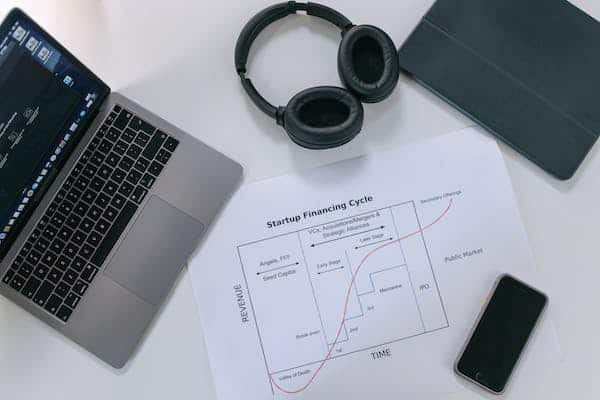Agile Development: What Is It All About?

Agile Development: What is it?
Through an iterative method of project management and software development, agile enables teams to provide value to their clients more rapidly and with fewer challenges. Instead than basing everything on a “big bang” launch, an agile team delivers work in manageable, modest increments. Continue to learn more about agile development.
Also see: Creating E-Learning Courses: What Makes The Course Development Process Successful
How Agile Development Started
Many software professionals had grown unhappy with micromanaged development procedures that disregarded their needs by the middle of the 1990s. Although there were existing iterative development techniques, these professionals required something more dynamic to aid in their work.
Software was growing more and more complex. They desired more creative control over their initiatives. So they started to create a strategy that would allow them to remain adaptable and react to design issues as they arose. They appropriately dubbed it “Agile.” This was their response to the standard, linear Waterfall project management paradigm, which requires teams to adhere to a strict development path throughout the product lifetime.
The software industry was transitioning from store-bought boxes to downloads around the year 2000. The regulations of the game were also evolving. 17 professionals with experience in extreme programming and adaptable software development gathered in Utah in 2001 to come up with a different strategy. The Manifesto for Agile Development was written by this organization, the Agile Alliance. Agile development is based on four of its twelve guiding principles. They cherish:
- Functional software above thorough documentation;
- It is people and their relationships over procedures and equipment;
- Collaborating with the client when negotiating a contract; and
- Following a strategy over reacting to change.
Transparency and iteration, according to the authors of agile development, are crucial. Clients need to be actively involved in projects that are “alive” with teamwork. The Waterfall approach offers advantages, but teams are constrained by the way each step of development and its outcomes affect the next.
Everyone finds it challenging to maintain a clear, daily perspective of the broader picture.
In addition, team members frequently work in silos and “throw over the wall” products to other teams without thinking. Agile teams, on the other hand, collaborate and work iteratively to achieve the proper outputs. They perform this under time constraints so that they can deliver these on time.
In design sprints, which last anywhere from 1-4 weeks, teams maintain a high level of focus on producing short-term, more manageable goals (or “chunks”).
Internal stakeholders inform each other on needs, review the previous day’s actions, and modify plans at daily scrum sessions. Teams track their progress and evaluate the development cycle at the conclusion of a sprint.
Agile Methodology Types
Every Agile methodology aims to embrace change and adapt to it while producing usable software as quickly as possible. The ways in which each methodology describes the stages of software development, however, varies. The most popular Agile techniques include:
Project managers can utilize Scrum, a simple Agile framework, to manage all kinds of incremental and iterative projects. Product owners in Scrum can collaborate with their team to define and prioritize system functionality by creating a product backlog. The product backlog is a list of all the tasks that need to be completed in order to deliver a successful, functional software system. This includes non-functional requirements, features, and bug patches.
No extra functionality can be added after the product backlog has been established unless done so by the corresponding team.
Cross-functional teams enter the picture and agree to deliver functional portions of software during each sprint frequently within 30 days, once the team and the product owner have determined the priorities. The product backlog is reviewed, analyzed, and reprioritized following each sprint in order to choose a fresh set of deliverables for the following sprint.
Since Scrum is straightforward, effective, and able to combine the numerous underlying concepts endorsed by the other Agile techniques, it has grown in favor over time.
Another iterative approach is lean software development, which emphasizes the use of efficient value stream mapping to make sure the team provides value to the client. It has no strict guidelines or regulations; instead, it is adaptable and constantly changing. The following fundamental tenets underpin the Lean methodology:
- Increasing knowledge
- Strengthening the group
- Promoting morality
- Eliminating waste
- Recognizing the overall
- Decision-making as late as feasible
- Getting the merchandise to you as soon as possible
- Designing for User Experience (UX) and Agile Development
The Lean methodology depends on quick and trustworthy feedback from clients and programmers to deliver quick and effective development workflows. Instead of using a hierarchical flow of control, it gives people and small teams the ability to make decisions in order to achieve this. The Lean methodology instructs users to only choose features that are actually valuable for their system, to prioritize these features, and to provide them in small batches in order to avoid waste. In addition, lean software development promotes writing automated unit tests concurrently with the code and focuses on maximizing the productivity of each team member.
Extreme programming (XP) is a methodical technique that prioritizes efficiency and continuous delivery. It encourages closer teamwork, quick feedback loops, constant planning and testing, and more customer involvement. Software is provided frequently, typically once or twice a week. The objective is to increase the quality and responsiveness of the software in response to shifting client needs.
The principles of communication, feedback, simplicity, and bravery form the foundation of the XP methodology. Customers define and rank their requested user stories in close collaboration with their development team. However, it is the responsibility of the team to deliver the user stories with the highest priority in the form of tested, functional software. The XP approach gives users a supporting, lightweight framework that directs them and helps ensure the delivery of high-quality enterprise software in order to maximize productivity.
The most portable and flexible approach is crystal. It emphasizes the importance of people and the interactions that take place while working on an Agile project, as well as the importance of the system that is currently being developed to the business. The Crystal approach is based on the understanding that every project has distinct qualities that call for a slightly customized set of rules, procedures, and practices. It therefore consists of a variety of Agile process models, including Crystal Orange, Crystal Clear, and Crystal Yellow. Each model has distinctive qualities that are influenced by a variety of variables, such as project priorities, team size, and system criticality.
Crystal stresses frequent delivery of functional software with significant customer participation, adaptability, and the removal of red tape and distractions, much like other Agile approaches. The three main tenets of it are simplicity, teamwork, and communication.
Without adding to the stress of the software development lifecycle, Kanban is a highly visual workflow management technique that enables teams to actively manage product creation, with a focus on continuous delivery (SDLC). It has gained popularity among groups that use Lean software development techniques.
The three fundamental tenets of Kanban are to visualize the workflow, reduce the amount of work that is in process, and enhance the flow of work. The Kanban method is intended to aid teams in collaborating more effectively, much like Scrum is. It promotes an atmosphere of active and continuing learning and growth by encouraging continuous collaboration and attempting to establish the ideal process.
The necessity for a standard industry framework for quick software delivery led to the creation of the dynamic systems development method (DSDM). The DSDM is built on eight fundamental concepts; if any one of them is broken, there is a chance that the project won’t be completed successfully. These are the eight guidelines:
- Collaboration
- Punctual delivery
- Exhibited control
- Ongoing, unambiguous communication
- A persistent emphasis on business needs
- Iterative design
- Incremental construction on a solid base
- Rejection of quality compromise
Rework is incorporated into the DSDM process, and all modifications must be reversible. Utilizing MoSCoW Rules, system requirements are ranked in order of priority as follows:
M – A must have
S – ought should
C – could have, but not much.
W – won’t have right now, but could have in the future
The DSDM places importance on the fact that not all requirements are regarded as essential. In order to avoid affecting higher priority requirements, each iteration should contain less important things that can be deleted.
Finally, feature-driven development (FDD) combines best practices in software engineering, including feature-driven development, code ownership, and domain object modeling, to produce a streamlined, model-driven development approach. FFD starts by specifying the general shape of the model, which in turn generates a feature list.
The technique then moves on with two-week-long iterations that concentrate on planning by feature, designing by feature, and building by feature. A feature should be divided into smaller features if it takes longer than two weeks to develop it. Since JEDI, or “just enough design initially,” is used, FDD’s main benefit is that it is scalable, even to huge teams.
Designing for User Experience (UX) and Agile Development
There are considerable differences between development and UX people, particularly in how they perceive users’ demands. Management must establish the ideal climate for open collaboration and ongoing communication between UX, development, and other stakeholders throughout a project for an organization to successfully use
Agile development. How firms define UX roles is a crucial factor to take into account, as it will have an impact on how much authority and responsibility any UX team members are given in projects. In order for firms to benefit the most from an Agile-UX cultural combination, The Nielsen Norman Group has identified four essential principles:
- Management needs to be aware of and supportive of UX efforts.
- UX experts should take the initiative and make an effort to connect with their peers.
- Agile processes must be adaptable enough to meet the requirements of UX staff.
- Employees from the UX department should work with developers to establish trust and a working relationship.
Management must allocate enough resources for UX research in order to support UX activities. Working closely with UX staff, a business analyst or solution architect can assist in communicating concepts to developers. Above all, design ought to guide development in choosing the proper problems to work on during sprints. Teams can produce the best deliverables when UX experts assist them in keeping in mind the needs of the customer and the users.






